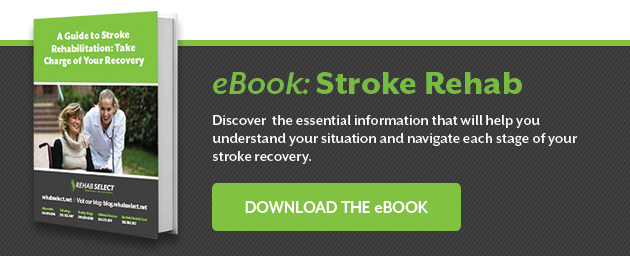
You've made it through a stroke. The initial crisis is over. Now it's time to begin the task of dealing with the aftermath — the physical and emotional effects of stroke. While life after stroke is a different experience for every survivor, one thing that you can be sure of is that it will take time to recover. The good news is that with effective therapy after stroke — as well as a great deal of determination, hard work, and patience — you can take your life back, overcoming or adapting to the challenges it brings and moving on to a fulfilling future.
What You Need to Know About Therapy After Stroke
Stroke rehabilitation is a comprehensive treatment program to help you recover from the effects of the event and lower your risk of having another one. The typical program will begin by assessing damage the stroke has done, as well as your existing risk factors for a subsequent stroke, in order to formulate a personalized plan that addresses your needs.
This assessment is typically done by a team of medical professionals and therapists that may include a general physician, neurologist, neuropsychologist, physical therapist, speech-language pathologist, occupational therapist, dietitian, and rehabilitation nurse, among others. Generally, a case manager is also involved to coordinate your care and help you understand the rehabilitation process.
Then, your rehabilitation team will help you recover your strength, relearn any lost abilities, and if necessary, help you learn to work around any disabilities or weaknesses left behind by stroke. You'll also learn about dietary and lifestyle changes you can make to lower your risk factors for another stroke, improve your overall health, and get help getting started on those changes.
Finally, your rehab team will help you learn to manage the emotional effects experienced during your life after stroke. Depression is common after stroke — caused by the trauma to the brain, as well as the simple stress of the experience and its aftermath. Anxiety can be an issue too, as stroke survivors worry — understandably — about how their lives, finances, and family will be affected.
Inpatient or Outpatient Therapy After Stroke?
Inpatient stroke rehab involves checking into a specialized rehabilitation facility for intensive therapy and care. Outpatient rehabilitation therapy may consist of appointments at a rehabilitation clinic daily or several times per week, or having therapists and other rehab professionals provide services in your home.
Which option is ideal for you is a decision best made with your doctor, who will be familiar with your personal circumstances. However, many patients — especially those who experience significant impairments after stroke — find that round-the-clock professional attention and intensive rehabilitation programs of dedicated, inpatient rehab centers benefit them greatly during those first weeks after stroke, helping them recover more quickly and stay motivated as they work to overcome the challenges encountered during life after stroke.
When Should the Stroke Recovery Timeline Begin?
As soon as possible. Research has shown that stroke survivors who begin rehabilitation therapy as soon as they're medically stabilized and get the go-ahead from their doctors accomplish the most progress, recovering more skills, abilities, and strength than those who delay rehab or fail to follow through with therapy at all.
The bottom line? Whether you choose a stay in an inpatient rehab center or outpatient therapy, rehab is an essential step in improving your life after stroke. Additionally, getting started as quickly as your doctor will allow can make a big difference in terms of progress during recovery, helping you take your life back from stroke more quickly and completely.
Start Your Stroke Recovery Timeline in Alabama
Reclaiming your life after stroke isn’t simple. But it is easier with the right help. Across Rehab Select’s five Alabama locations, our teams of professionals are here to assist you through the entire stroke recovery timeline — from the very beginning stages to getting back on your feet. Contact us today to schedule a tour of one of our state-of-the-art facilities.





